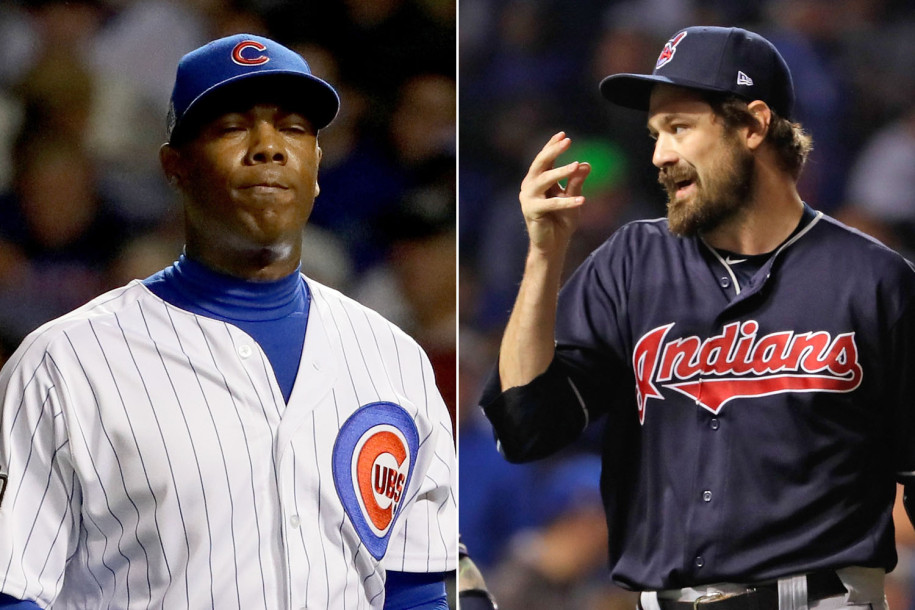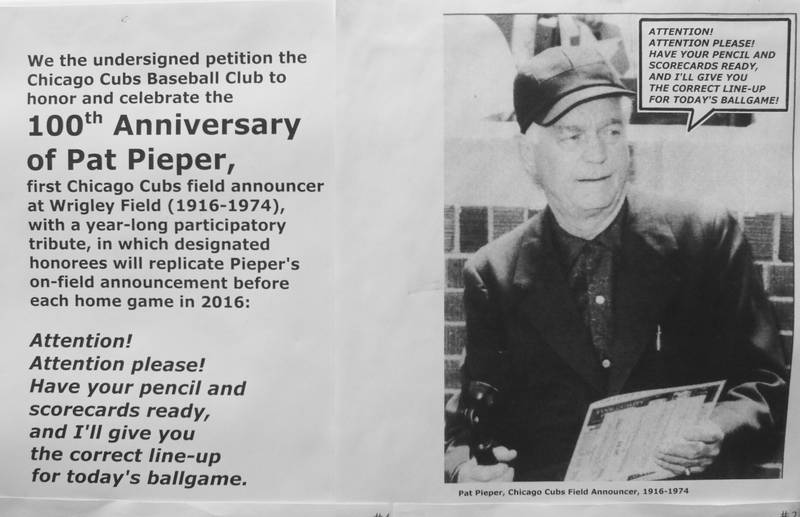|
It has taken nearly a month of mourning, but I am finally paying attention to baseball again.
The World Series has gotten interesting, after five games. Anything can happen, just like in real life. Of course, my avid interest in the fifth game may have come from fear and withdrawal, because of the assorted ghouls floating in late October air -- fright masks of Donald Trump and Anthony Weiner, perfectly matched, like twin Rasputins, scoundrels that never go away. Seeing Weiner crawl out of the crypt (with help from the FBI) to invigorate his soul brother from the other party drove me to watch the fifth game Sunday night. Before the Series began, I wrote on another site that I had no dog in this fight, since the gallant Mets went down in the wild-card game. That still goes. (Hard to feel much sympathy for a franchise that traded Lou Brock or a franchise that traded Rocky Colavito. Then again, I root for a franchise that, gulp, traded Nolan Ryan.) It would be easy to rationalize being a National League fan and root for a team that has not won a World Series since 1908, but what’s another year or 20? I also root for the Rust Belt, for old river towns like Pittsburgh and Cincinnati -- and Cleveland would qualify for underdog status ahead of Chicago. But that’s not the point. Escapism is the point. Things I have noticed about this Series: Jason Kipnis of Cleveland personified the ambiguities of this Series after his three-run homer Saturday. He’s from a Chicago suburb, and would not exult on TV about what it would mean to win a World Series. He’s going home, either way, after the Series, and did not want to insult his home town. Nice guy. I love the antiquity of Wrigley Field (blessedly still named after the chewing-gum family that used to own the team, not cursed anew with some geeky corporate logo.) Wrigley is one of only four ball parks in which pitchers warm up in foul territory, bless its heart. The Cleveland bullpen was slow to clear out for Jason Heyward to chase a wind-blown popup in the first inning Sunday night. I flashed back to Pat Pieper, the public-address announcer for half a century, who worked on the field, behind home plate. And I noticed the low-slung brick wall behind home plate from when my Brooklyn Dodgers traveled to meet Bill (Swish) Nicholson back in the day. I love Wrigley the way I love Fenway Park – a reminder of the past. But that doesn’t mean I am rooting for the Cubs. Pardon my smirk, but I love the two recent Yankees dominating out of the bullpen – lefty Andrew Miller of the Indians and righty Aroldis Chapman of the Reds. This is the time of year for Mr. October (Reggie) and Mr. November (Derek.) Now these two ex-Bronxites will be rested for longish duty in the sixth game. The Yankees won’t know if they made good deals, unloading these relievers for young talent, for several years, so this Series must be a lot of fun for Yankee fans, what with A-Rod preening in the overcrowded Fox gallery. (How I miss the Mets’ broadcasters, known commodities, not overloading the listener with detail and gab.) Any World Series only gets really interesting when it goes to a sixth game, full of developed plot lines, when anything can happen from here on in. For somebody who has been taking a month off in sympathy for the injured Mets, these are fresh faces, fresh arms. Thanks to long-suffering Cleveland and long-suffering Chicago and the long slog of post-season baseball for prolonging the World Series, for giving another day or three of diversion from twin Halloween horrors.
ahron horowitz
10/31/2016 11:58:55 am
being amets fan since theystarted i realized the differace between us and the people of chicago.we in new york love our baseball and the team we root for is our vehicle to enjoy the sport.while the cubs people/because they throw back the other teams home run balls show they are just second city rubes with no understanding of the real beauty of the game.
George
10/31/2016 12:36:23 pm
Hi, Ahron: thanks for checking into the site. I can't go along with your view of Cubs fans. I've been going there since '62, and have seen fans (women, kids, day games) who kept score and suffered. World Series fans are different. They pay scalper prices and have double or triple anxiety. But regular Cubs fans? They deserve a break one of these decades. Good to have your point of view here. GV
Brian Savin
10/31/2016 09:24:33 pm
Oh. George, give a true fan a break. I appreciate Ahron's point of view, and agree with him, because there has been, for the last couple of decades, a political component to Cub fandom that has gone way beyond sports and has influenced fan behavior for the worse in my view, exactly as Ahron's notes. Local politicians there seem to think that they can get away with any behavior simply by supporting the Cubs. To confront that, in my view, Chicago politician should not be allowed to attend any Cubs game until the city's outrageous murder rate is reduced, the schools are empowered to respond to community needs, their police comply with civilized processes and basic human rights, and Mayor Rahm Emanuel is investigated properly for his total lack of required reasonable response. Until then, and anyway, go Indians!!!!
Brian Savin
10/31/2016 09:37:08 pm
One other thing, George, the Indians trade of Rocky Colovito for Harvey Kuenn was a damn smart trade. Singles for home runs. I remember the Sports Illustrated cover on that trade and agreed with the Indians. So, what was the issue you had at the time, before injuries?
George Vecsey
11/1/2016 09:34:06 am
Brian, the Cubs are owned by a conservative family (Ricketts) and seem to be the domain of the North Side (white??) and the political structure has gone from Daleys to Emanuel. But does any of this -- and the violence in parts of the city -- impact the long history of the Cubs? I do know somebody who spent time in Central Illinois (annoying Cub and Cardinal fans with a photo of Lenny Dykstra in Mets uniform) who says the White Sox are "the people"s team." Okay. I know Pres Obama frosted some folks in St. Louis by wearing his White Sox jacket to an all-star game at Busch. But is any of this connected to a 108-year wait, and a few wretched collapses?
Brian Savin
11/1/2016 06:06:06 pm
FYI: "homers for singles???" I was quoting the cover page caption of Sports Illustrated that month. I stand by my opinion of that trade. Kuenn won the batting title, for God's sake -- that was absolutely not a dump!! As for the corruption of Chicago, it is manifest to the present day and does not qualify that city for sympathy, in my view. Go Indians!
Altenir Silva
11/2/2016 08:46:42 am
Dear George, 11/30/2016 05:01:42 am
<a href="http://newyear2017.site/">New Year 2017 Wallpaper Free Download</a> Comments are closed.
|
Categories
All
|











